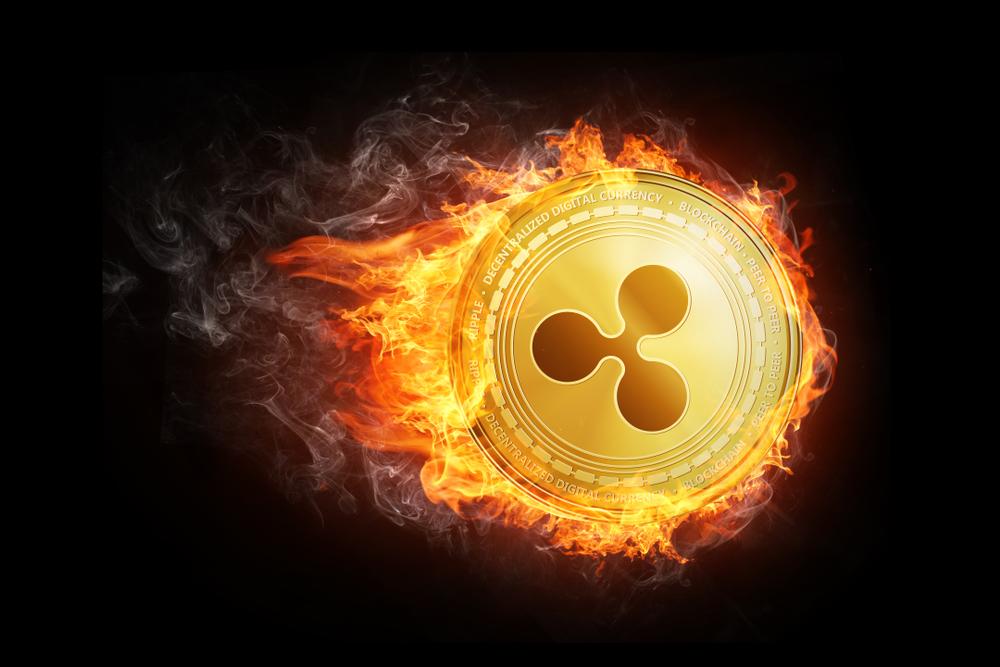- Ripple has published its report on the fourth quarter of 2019. Monthly sales of XRP decreased by more than 80% to USD 13.08 million compared to the third quarter of 2019.
- The transaction volume of Ripple’s On-Demand Liquidity (ODL) payment solution increased by 390% compared to the previous quarter.
In December 2017 Ripple has committed to transfer a total of 55 billion XRP to an escrow account and to freeze these assets. Each month, on the first of each month, the company releases 1 billion XRP for sale and at the end of the month transfers the unsold XRP tokens back to the escrow account. This procedure is criticized for negatively influencing the price of XRP.
Although Ripple has made it clear on several occasions in the past that the company has no influence on the price of XRP, as the two entities exist separately. The critics, however, are not convinced by the argumentation. However, the quarterly report presented a few hours ago should surprise and delight them.
XRP sales fall by more than 80% in the fourth quarter
Ripple had already significantly reduced XRP sales in the third quarter of last year, bringing total XRP sales to USD 66.24 million. Over-the-counter sales generated USD 50.12 million in revenues, while programmatic sales amounted to USD 16.12 million.
Beginning in the fourth quarter, Ripple took a break from programmatic sales and focused exclusively on over-the-counter sales to a few key strategic partners. As a result, sales decreased by more than 80% to a total of USD 13.08 million. The following table of the fourth quarterly report shows that revenues were generated exclusively through the OTC business:
| Sales Summary (dollars in millions) | Q3 2019 | Q4 2019 |
|---|---|---|
| Institutional direct sales (OTC) | 50.12 | 13.08 |
| Programmatic sales | 16.12 | 0 |
| Total sales | 66.24 | 13.08 |
In the fourth quarter, XRP 3 billion was again released from the escrow account. Ripple describes that in December 2020, Ripple returned a full billion XRP to the escrow account for the first time ever:
In total across the quarter, 2.7 billion XRP were returned and subsequently put into new escrow contracts.
As of 31 December 2019, Ripple has locked 49.9 billion XRP in a number of escrows. The ledger technology, enforced by consensus, controls the release of the XRP.
Demand for ODL explodes
Last year, the value of the US dollar settled via ODL increased a hundredfold between the first and fourth quarters. ODL, in particular, achieved growth of more than 390%, showing an increasing demand (freely translated):
The number of ODL transactions also increased by 390% from Q3 to Q4, showcasing high customer demand for leveraging digital assets, specifically XRP, in cross-border transactions.
Ripple was also able to win renowned partners in the derivatives market. So far, XRP derivatives are available on well-known exchanges such as Binance, Huobi, OkEX, AAX and FTX. According to Ripple, XRP derivatives are an important instrument for managing risks and transactions via cross-border payment solutions. Ripple sees this market as a catalyst for the maturation of digital assets and an important growth market.
The decentralized financial market (DeFi) has also experienced significant growth and has a volume of more than USD 5 billion. XRP is represented on some of the world’s most popular crypto-lending platforms such as Genesis, Celsius, Nexo and SALT. Ripple describes that concerns about a “crypto credit bubble” are emerging, but that the growth potential for this year and next remains significant.
XRP’s price is unimpressed by this news and has fallen – 3.09% in the last 24 hours, to a price of $0.2309.
Follow us on Facebook and Twitter and don’t miss any hot news anymore! Do you like our price indices?
Recommended for you:
- Buy Ripple (XRP) Guide
- Ripple XRP Wallet Tutorial
- Check 24-hour XRP Price
- More Ripple (XRP) News
- What is Ripple (XRP)?
Subscribe to our daily newsletter!
No spam, no lies, only insights. You can unsubscribe at any time.




